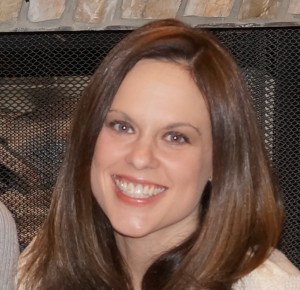As I noted in the introduction for Alicia’s interview last week, she provided me with lots of material. Below is the final excerpt from her interview, addressing her thoughts on career validation and the inclusion of special needs students in the school environment.
Can you share a moment from your therapy experiences that validated your choice to go into occupational therapy?
I’ve been so blessed to have had many moments that make me feel valued as a professional. I feel validated when my students/patients meet their goals. I’ve had many families follow me when I’ve changed clinics. I also feel as though I’ve helped a child when the family stays in touch with me after I’ve stopped working with them.
There isn’t one moment that stands out as being the moment. What I do remember and treasure, is the privilege of watching one child I worked with grow into an amazing young man. This child, Will Robinson, stands out in my mind because his family taught me so much about the kind of therapist I wanted to be. I met Will during my first job out of college when he was about six years old. As I recall, he was non-verbal (until the age of four), struggled with eye contact and pulled away from any kind of physical touch. His mother Myra, a former physical therapy assistant, devoted years of her life to learning and understanding ABA (Applied Behavioral Analysis), nutritional and dietary options, sensory integration, and many other autism treatments. Myra shared all her knowledge and experience with me.
In the beginning we focused on his handwriting, because Myra was very concerned about it. Will was in regular education classes with resource support during elementary school. That all changed when he transition to middle school, where he was placed in inclusive instruction, with only a few classes that had typical peers. We continued to work on cursive writing, but also added a number of life skills. We utilized his math skills (adding and subtracting) to solve word problems relevant to money and time. With mock purchase transactions we’d calculate discounts and account for tax and verify that he received the correct change. We balanced pretend checkbooks and eventually he got his own check card. We cooked and cleaned. I taught him how to make his bed, load the dishwasher and make snacks. Turns out, Will’s a pretty good sous chef in the kitchen. I took him grocery shopping and he was my navigator in the car. He’d guide me from location to location, pointing out the road signs and traffic signals. We also worked on his sport skills for his Special Olympic Team.
I feel so blessed to have been a part of Will’s journey – and he still thinks that I’m cool enough to be his friend on Facebook! I’m validated by the idea and hope that I’ve changed the life of at least one child. I hope and pray that I’ve been as successful with other children.
In your opinion, what can schools do to promote awareness and inclusion of special needs students?
I think I can best explain my thoughts on this topic with a metaphor. I’m going to use the Master’s Golf Championship as seen through the eyes of those who have never been.
There’s a large, high fence and heavy trees that surround the Augusta National Golf Course. You can literally drive past the course without ever knowing it’s there. You may be aware that there’s something over that fence, heard somebody mention it a time or two, but you’ve never held the golden ticket that gets you past the gate. You may have even witnessed people coming in and out, but you have no first hand reference, because you haven’t actually been inside. You can only imagine what it’s like.
Healthcare and education have built a large fence and planted some heavy trees to protect the privacy of their patients and students. I agree that the teacher/therapist/student/client relationship is intimate and privacy should exist. However, putting up fences makes it difficult to promote awareness and teach understanding of what’s on the other side. There are people who will “keep driving by” and never know what they passed. A beautiful opportunity to promote awareness is lost. There are people who think they know what’s on the other side, but they’re oblivious to what it’s really like inside. How can they understand and support special education if they have no personal experience?
Unfortunately, those of us with passes to walk inside the classroom also have to build a personal fence of confidentiality. We can’t talk freely about what’s happening because of privacy issues. I do believe there’s an opportunity to correct misunderstandings and myths about special education and the students who are receiving support, but it’ll take a lot of effort and change. It’s a double edged sword. The professionals who can do the most to support awareness and inclusion often have their hands tied. I’d love to point out all the beauty that exists behind the fences.
I applaud the schools that recognize the teachers, therapists, staff, and students who make up our special education department. I think parents who are willing to put themselves out there should come and talk to regular education students about their child’s diagnosis, their family struggles and even their obstacles out there in the world. Their testimony would help shed light to the other side of the fence.
Thank you, Alicia, for taking the time to share your thoughts!
What are your thoughts on inclusion in the schools?




One thought on “Thoughts on Validation and Inclusion from Alicia Harris”
Comments are closed.